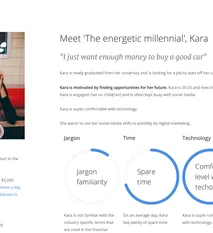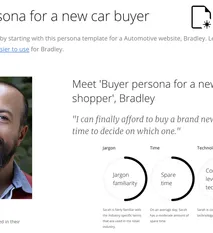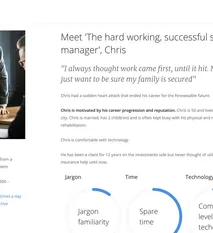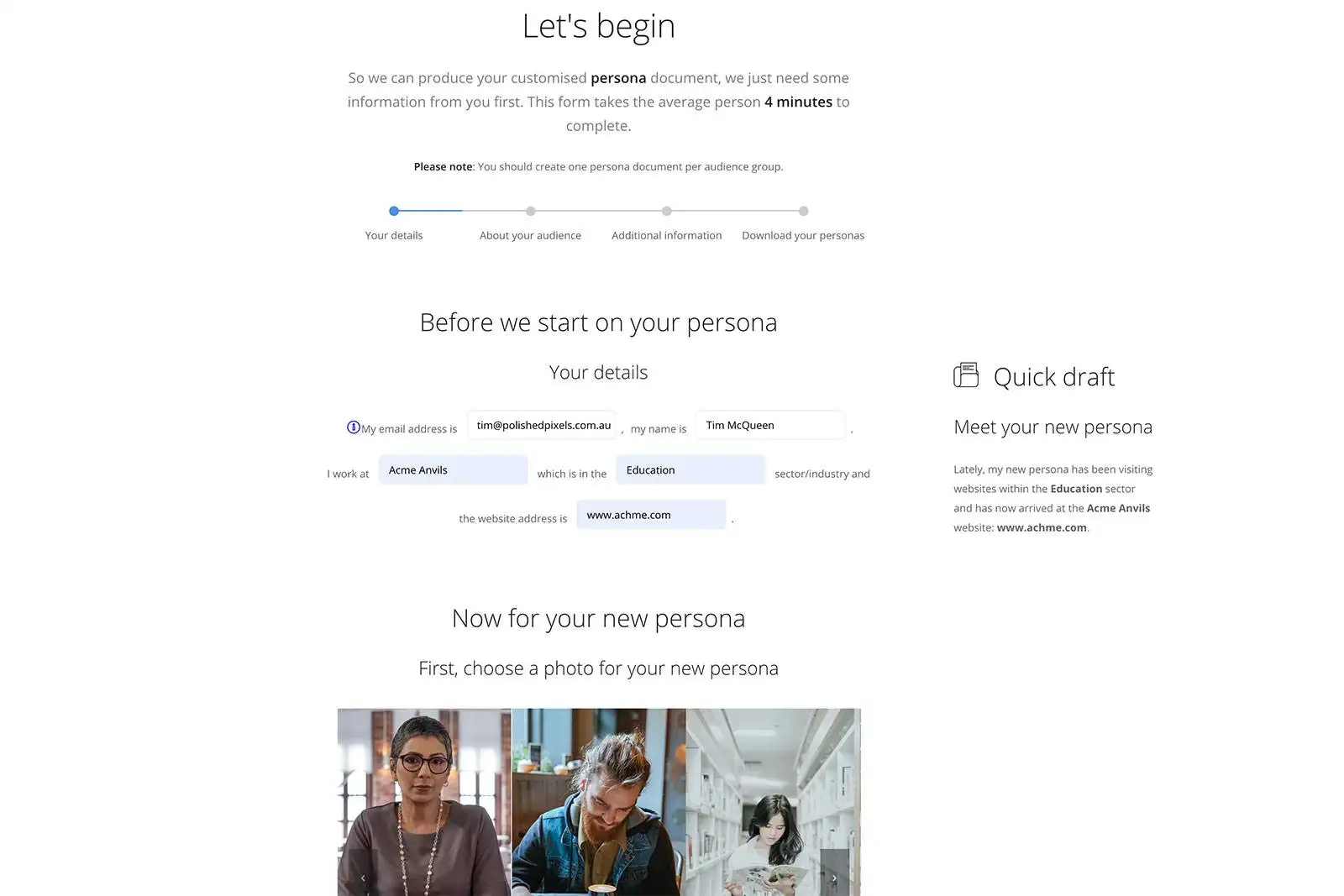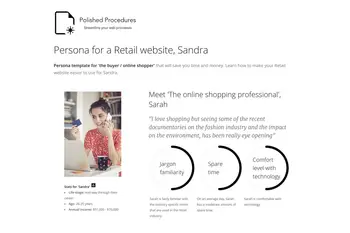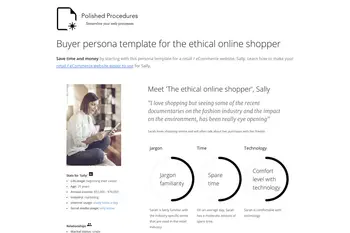
- Read time: 7 mins
- Tech level: low
- Key point: Having a strong website publishing process is key to getting your content published smoothly and consistently while also eliminating unnecessary extra work
- Key resource: go straight to the 'Website publishing process generator'.
Having a detailed process for publishing content on your website will add checks and balances, which improves the quality of your online content. This is particularly important for large organisations where many different editors are publishing content with no consistent guidelines.
Content is king, queen, prince, and princess, so it’s critical that your content is relevant to your target audiences and is free of common problems that would stop website visitors from completing their goals or tasks. Common problems include:
- broken links
- out of date content
- spelling mistakes.
Creating a publishing process from scratch can be incredibly time-consuming, but it doesn’t have to be if you use our Website Publishing Process Generator.
Our generator saves you time and effort so you no longer have to spend hours compiling and editing a process document yourself. You can have your own website content publishing process in minutes rather than days and there’s no need to start with a blank page.
Creating a policy like this from scratch and getting the necessary approval from all parties can be a lengthy process. It could take months or even years to produce the perfect process, but using a website publishing process created by the generator could be the ideal placeholder as your company works towards achieving their perfect policy.
If you don’t want to use the Website Publishing Process Generator because you may require a more customised solution, then here are ten steps you can follow to create an effective website publishing process.
Step 1. Thinking about the publishing steps that will work in real life for your organisation
You don’t want your process document to sit on a shelf and collect dust, so you’ll need to find harmony between the perfect process and real life’s expectations.
Rather than a process that is based on a perfect world, creating a process that takes your real workplace into consideration will yield the best net outcomes. In real life, some ideal steps within a process (while best in practice) just won’t be used by the people involved.
Make a list of high level and practical steps that would improve your web publishing process.
Step 2. Get buy-in from the top
Buy-in from the top will enable you to successfully implement your new website content publishing policy. Without support from senior members of your organisation, your journey ahead will be difficult and potentially impossible.
Sell the benefits of implementing a publishing process and include points such as:
- Risk reduction. Without checks and balances, there’s a risk of visitors complaining or taking legal action against your organisation because of misleading content.
- Cost savings through efficiencies. When a process runs well, there is less double-handling and better use of the resources available within your organisation.
- Better productivity. Effective processes and procedures will improve productivity, which is good for any organisation.
- Time savings. Good processes and procedures reduce lag time and wastage.
Step 3. Try to remove egos and personalities from the equation
Roles and responsibilities
Once you establish the publishing steps that should work in your organisation, establish the people in charge of them. For the best results, ensure that each team member stays within their circle of expertise and authority.
The people with the relevant positions, knowledge, and authority should be the ones involved, not the most persuasive or loudest people in the room.
Determine early on what decisions people can make and what limitations they have. Empower the right people to be making the right decisions and ensure that all involved knows and understands their roles and responsibilities.
Having checks and balances ensures people are directing their questions to their designated supervisors. For example:
- You would not phone a veterinarian if your house floods.
- You would not ask your accountant how you should design your garden (unless they were also an award-winning gardener on the side).
- You would not seek out your landscaper if you needed help filing your taxes.
Establish this early and document it. Keep this document within hands reach because you will need it as you continue developing your guidelines.
Link to overarching standards
When referring to a rule, back it up with a reference to a common standard or practice. This closes off any room for confusion as to whether or not these steps within your proposal are your opinion or if these steps are best practice. It’s much more difficult to get approval on a process that’s based on opinion rather than one that has its foundations stemming from confirmed practices and tried and true standards.
If you can link your process to the previously-approved policies of your organisation, then that can reinforce the legitimacy of your new process and increase internal buy-in and acceptance.
Step 4. Agree on your target audience
Research and find out who your ideal website visitors are. You can create your own personas to help you focus in on the people who you want to bring to your company rather than the ones who you are already attracting.
Use this persona generator to quickly create industry standard personas. Once your personas are approved, print them and place them around your office as a reminder for who actually visits the website. When you get caught up in the inner workings of an organisation, it’s easy to forget that the customers are the most important people in the process. The websites with the worst user experience are usually the ones that focus inwardly rather than outwardly. Printing out your personas will help combat this tendency.
Latest persona templates
See the three latest personas created by our persona generator tool.
Step 5. Streamline your business case process
You’ll be doing yourself a massive favour if you train your colleagues to follow a standard process when they request work to be completed.
The most important projects will be completed first when you insist that each request for work comes with a standardised business case.
Requests for work can often come in a variety of formats and with different levels of detail. Sifting through work-requests that aren’t detailed enough or don’t articulate the benefits to completing the request is a very difficult process. There is also a cost for all work that is accepted, produced, and delivered. The cost of providing quality services is often out of sight and out of mind, particularly for internal clients.
Depending on the size of your organisation, you may get a large number of requests for work every month. If you were to tally up the work involved in delivering these requests and compare them to the resources available, there’s usually an imbalance. The requests you receive will add up to require more resources than you actually have. Unless you have unlimited resources (which is unlikely), you’ll need to be selective in which projects you accept.
The evaluation and selection process regarding the work you decide to take on will be much faster and simpler if each proposal is submitted using the same format and attributes.
This is why we created a business case generator that stakeholders can use to explain the merits of their proposals.
Step 6. Streamline your briefing process
In the same way a good business case provides strong reasons for work to be taken on, a good briefing process shows what services are required and what goals they will accomplish.
Polished Procedures has created a user-friendly briefing tool that will enable your colleagues or clients to lay out the work that needs to be completed and the goals that need to be met.
The tool also ensures that basic information is included in each business case, such as timelines and order of priorities.
Step 7. Establish who is involved in content publishing
When establishing who should be involved in the content approval process, less is best. If too many stakeholders are included, then they will slow down the publishing process and risk paralysis through analysis.

Figure out which roles within your company need to be involved in the process. Take a Marie Kondo approach; if someone doesn’t add any value to the process, shake their hand, thank them for their input, but remind them of their purview (see step 3 of this article).
Give each key stakeholder a role within the publishing process
There are three common roles in a workflow that should be appointed to internal stakeholders.
Step 8. Establish a workflow using your CMS
The key to an effective CMS workflow is simplicity
Workflows can help introduce accountability into your website publishing process. It’s important that you work out a practical process that won’t cause ‘bottlenecks’ that slow down progress, or worse, cause more trouble than they’re worth.
The best content management systems (CMSs) will have workflow functionality already included, such as the enterprise CMS Squiz Matrix. When you pair this functionality with an editing interface such as Edit +, then the system becomes very user-friendly for non-technical website editors and approvers.
If your CMS does not have workflow functionality, then it’s perfectly fine to establish a low tech workflow. For example, the process could be:
- The approver takes a screen grab (I recommend Awesome Screenshot) of the content
- The approver annotates over the top of the screenshot with their edits
- They then email the image to the author
- The author replies, which creates a workflow ‘paper trail’
- The author either updates the content or publishes it, depending on the feedback given by the approver in step 4.
Step 9. Accessibility and SEO
Make sure that your content meets necessary accessibility standards. You can easily create your website’s accessibility policy using our accessibility policy generator tool. It’s important to remember that without an agreed-upon process, accessibility and SEO standards will fall behind, so it’s essential that these checks are built into the process of publishing website content.
It’s an added bonus that when you work on accessibility, you will also be improving the SEO of your web content because there is a high amount of overlap between the two.
Step 10. Set up a content maintenance calendar
Integrate content maintenance into the process so it becomes habitual work rather than ad-hoc. The problem with doing content clean-ups sporadically is that the backlog buildup means that clean-ups become a major project that needs:
- Project managers
- Meetings
- Additional resources
- Longer hours.
This extra work would not be necessary if content maintenance was built into the business as a regular working task.
A content calendar would also help make sure content is posted and updated consistently.
If you are looking for more tips on content maintenance, you can learn more about the 10 steps towards streamlining the process of website content maintenance.
Wrapping up
Having a strong website publishing process is key to getting your content published smoothly and consistently while also eliminating unnecessary extra work. A website publishing process generator enables you to create a process document in minutes. This document can be used as your permanent publishing process, or can be useful while you wait for the gold standard process to be created and approved.



